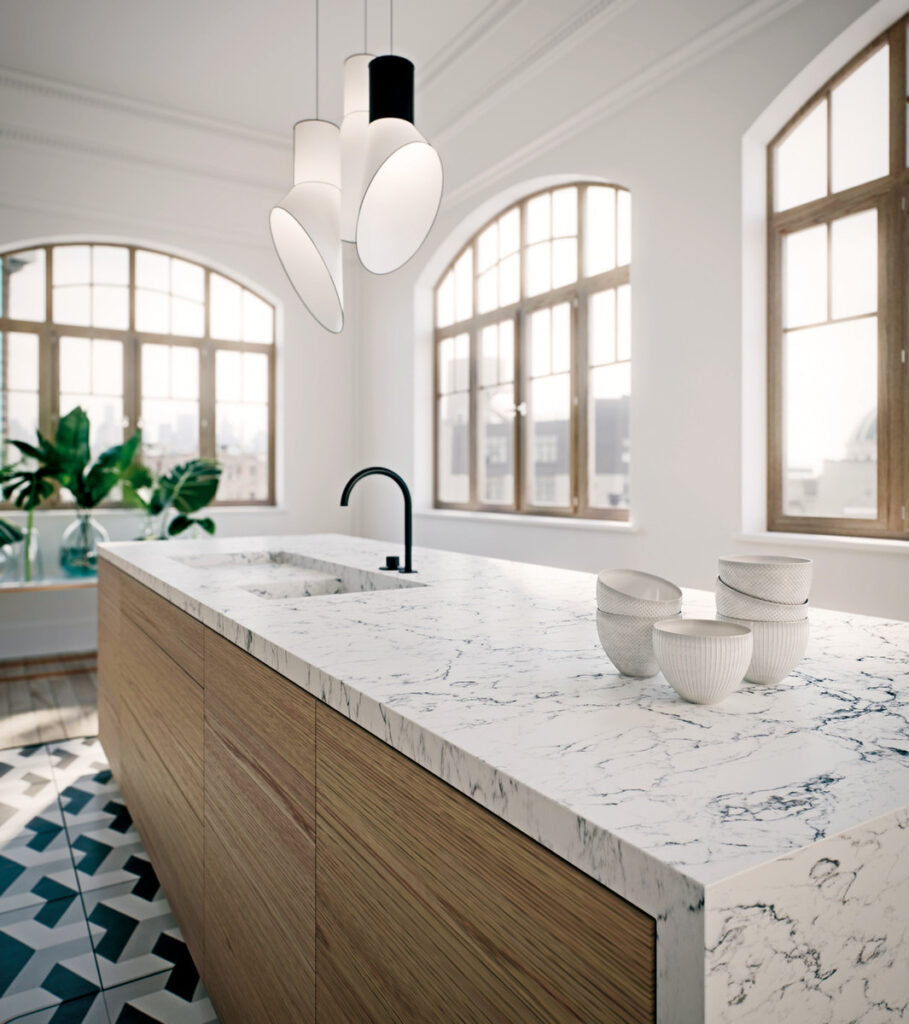Guide to Quartz Countertop Edges
5 min read
Redesigning a kitchen is an exciting but exhausting project. There are many decisions to be made from the overall design to the appliances to the colours, and, of course, the countertops. Once you have narrowed down the choice of countertop that suits your space, you must choose countertop edges.
A countertop edge can make your kitchen look complete and add sophistication to your space. And with quartz countertops, you’re not limited to a few choices.
You may have many different options of quartz countertop edges to choose from but what factors should you consider before deciding?

Laminated edges
Laminated edges give the impression of a thicker countertop. If you are wondering how to trim laminate countertop edges, the possibilities are endless. Not only do you get a unique countertop but also get to revamp your space using these inexpensive techniques. If you are a DIY enthusiast, you can laminate your countertop by gluing stone under your countertop’s edge. This not only supports plywood but also conceals it.
Why should you install a laminate edge?
A laminated edge will give your countertop a dramatic feel. However, you want to ensure that the seam is invisible, giving a smooth look.
A poorly done laminate edge can be disastrous. For instance, using the wrong glue can discolour your countertop over time or draw attention to the seam. If planning on getting a laminated edge, ensure you choose a manufacturer carefully.

Let’s take a look at countertop edge profiles that may suit your space.
These are among the most common quartz countertop edges. The simplicity, effectiveness and ease of fitting with most designs make them popular. With most eased at the edge to reduce sharpness, they are appropriate even in a home with children.
Here are the pros of squared quartz countertop edges
Here are the cons:
If you want the impression of a thick quartz countertop, then mitered edges will do the trick. Although you can confuse this with squared quartz countertop edges, the horizontal top and vertical apron should be mitered. Unlike other quartz countertop edges, a mitered edge profile will enable you to create unique styles in your space that would otherwise be impossible with other designs.
Here are the pros of a mitered quartz countertop edge profile:
The only con to the mitered quartz countertop edge profile is the cost. Given its uniqueness, it is more expensive than other quartz countertop edges.
This is also referred to as the Chamfer edge. While it has been used for some time, it remains a timeless and classic edge design. If you want to create more unique countertop edge profiles with the beveled edges, you can add other shapes as well as customize the angle or shape of the bevel. Most beveled edges angle is cut to 45 degrees.
Here are the pros of beveled quartz countertop edges
Beveled edges are an affordable way to add a bit of delicate charm to your space.

Ogee edges
Ogee edges deliver sophistication and luxury with their S shape smooth curves. Best for larger spaces, these quartz countertop edges can add depth to the cabinets and your quartz countertops.
Here’s why you should pick the ogee edges:
However, if you are looking for durable quartz countertop edge profiles, the ogee edges are not ideal as they are less durable than other quartz countertop edge profiles.
{{ subtitle }}
{{ i.desc }}
{{ subtitle }}
{{ subtitle }}